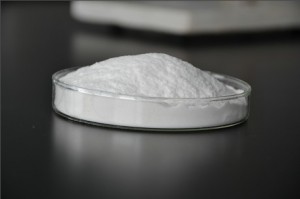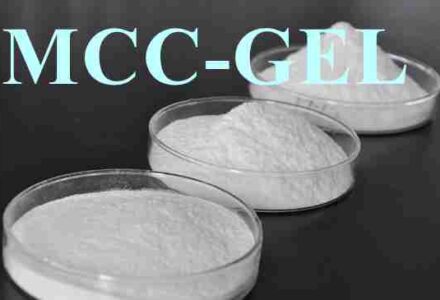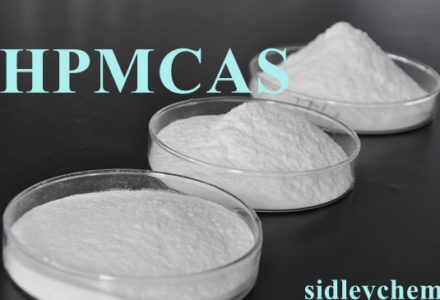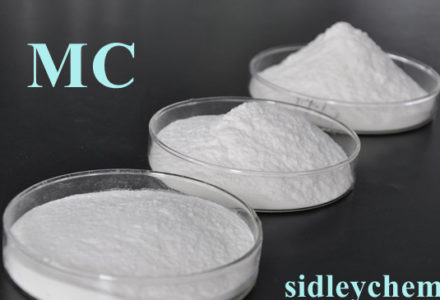Cellulose Gum (Sodium carboxymethyl cellulose or CMC)
What Is Cellulose Gum?
Cellulose gum (Sodium carboxymethyl cellulose or CMC) is a versatile, cost-effective and easy-to-use thickener. Cellulose gum has wide applications, including food, daily chemicals, papermaking, printing and dyeing, oil drilling, etc. Cellulose gum has stable performance. Especially in beverages, it has such characteristics as preventing precipitation and layering of beverages, improving the taste, and enhancing resistance to high temperatures.
Manufacture and Types
Cellulose gum is extracted from wood pulp and pure cotton cellulose. Cellulose gum can be divided into industrial grade and food grade. The industrial-grade cellulose gum can be further divided into technical-grade and semi-purified cellulose gum. And the technical-grade cellulose gum (or crude CMC) generally has purity less than 80%; the semi-purified cellulose gum has purity ranging from 80% to 95%; the purified cellulose gum has purity more than 99.5%. Only purified cellulose gum is safe to eat. SidleyCel cellulose gum can fully meet FCC IV standards, with quality and stability.
Uses
Cellulose gum is mainly used as a stabilizer and thickener, and widely used in milk drinks, yogurt, ice cream, baked goods, syrups. Cellulose gum is used in ice cream, in order to make water, fat and protein to form a uniform, dispersed and stable mixture, to avoid the appearance of ice crystals, and to have fine and smooth taste, and good formability. The addition of cellulose gum in ice cream can greatly reduce the production cost.
Cellulose gum can also be used in oil drilling and personal care products (toothpaste, hair gel, shampoo, lotion and ointment). The cellulose gum used in the textile industry can produce paper. The crude cellulose gum is used in small-scale laundry detergents.
SidleyCel™Cellulose Gum is applicable to the following industries.
|
Applications |
Description/Benefits |
Type |
|
Food Industrial |
In food applications, Cellulose Gum is not only a good emulsion stabilizer and thickener, but also has excellent stability and can improve the storage time of product. | |
|
Toothpaste Industrial |
With good compatibility, it enables toothpaste to remain stable and without water diversion, the paste has a good water-retaining property. | |
|
Textile Painting Industrial |
With a higher degree of substitution, Cellulose Gum can replace most sodium alginate in the dyeing and printing thickener. | |
|
Papermaking Industrial |
Cellulose Gum Papermaking Grade is an effective papermaking additive and can be used in many procedures such as pigment coating, adding in the pulp and surface sizing, with good water-retaining property, dispersion and shear thinning property. | |
| Oil-Drilling Industrial | The selection of Oil drilling Grade Cellulose Gum depends on the type of mud, the location, well depth and other conditions. | |
|
Fracturing Fluid Industrial |
Ultra-high viscosity products can replace guar gum, reducing production costs. | |
|
Detergent Industrial |
Cellulose Gum is the best active aid of synthetic detergent. |
| Properties of Sodium carboxymethylcellulose:The pure Sodium Carboxymethyl Cellulose is white or milk white fibrous powder or particles, odorless and tasteless. More read |
| Application of Carboxymethylcellulose Sodium in Ice Cream: Ice cream is a kind of frozen food processed from the basic materials including water, dairy products like milk, white granulated sugar, cerealose, maltodextrin, edible oil, fresh hen eggs, compound emulsion stabilizer and food flavor. more read |
| Application of Sodium carboxymethyl cellulose in Pharmaceutical Industry:In the pharmaceutical industry, Sodium carboxymethyl cellulose can be used as emulsion stabilizer of injections, the adhesion and film-forming agents of tablets.read more |
| Influence of degree of substitution (DS) on CMC Quality:As can be seen from the structure formula, there are three hydroxyl groups in each glucose unit, namely C2, C3, and C6 hydroxyl groups. read more |
What is Sodium CMC ? Sodium CarboxymethylCellulose (Sodium CMC) product is a kind of important Cellulose ether , a polyanion product with good water solubility obtained from plant fiber by means of chemical modification. read more
Cellulose Gum In Food:As the most widely used thickening agent in the world, sodium carboxymethylcellulose is widely used in the food industry as an excellent food additive.  more read
Food Gums in food :Carboxymethyl Cellulose (CMC), or cellulose gum is an abundant and natural polysaccharide found in all plants. Cellulose gum is a water-soluble gum that is based on cellulose. more read
Food Gums in food :Carboxymethyl Cellulose (CMC), or cellulose gum is an abundant and natural polysaccharide found in all plants. Cellulose gum is a water-soluble gum that is based on cellulose.
|
|
What is Cellulose Gum? Cellulose gum (carboxymethyl cellulose or CMC) is a versatile, cost-effective and easy-to-use thickening agent that has numerous industrial applications. It is found in a range of products, including tobacco, paper and yogurt. Cellulose gum stabilizes proteins, adds texture and mouthfeel, forms oil-resistant film and retains moisture in industrial and processed food products. Cellulose gum is primarily a stabilizer and thickening agent and used extensively in the food industry to thicken diary products (milk drinks, yogurt and ice cream) and stabilize pet foods, baked goods, syrups and beverages. Read more |
| Carboxymethyl Cellulose (CMC), or cellulose gum, is used as a viscosity modifier or thickener, and to stabilize emulsions in various products, including ice cream. Food-grade CMC can be used to improve the volume yield during baking by encouraging gas bubble formation; it is also used in frozen desserts and soft-serve ice creams to control ice crystal growth, and to improve mouthfeel, body and texture. This topic discusses applications of CMC, current research, market trends and ways to enhance the quality of bakery items and frozen desserts. Read more |
|
Sodium carboxymethyl cellulose (Cellulose gum) 466 or E466 The function(s) performed by the food additive when used in cooking. 1.Bulking agent – A filler substance that increases food bulk without increasing available energy value significantly 2.Emulsifier – An agent that forms or preserves a mixture of substances normally incapable of being mixed eg. oil and water 3.Firming agent – Helps maintain firmness of fruits and vegetables or interacts with gelling agents to strengthen food structure 4.Gelling agent – Facilitates the formation of a gel to change food texture 5.Glazing agent – A substances that gives food a shiny appearance or provides a protective coating 6.Humectant – A substance that helps prevent food from drying out 7.Stabiliser – A substance that maintains the uniform dispersal of substances in a food 8.Thickener – A substance that increases the viscosity of a food. Read more |
| Cellulose Gum – Carboxymethyl Cellulose (CMC), or cellulose gum is an abundant and natural polysaccharide found in all plants. Cellulose gum is a water-soluble gum that is based on cellulose. Cellulose gum has been used in food products for over 50 years as a thickener and stabilizer. Typical uses are in instant beverages, where it provides texture, baked goods, where it prevents staling, and ice-cream, where it prevents the formation of ice-crystals that can be formed from frequent freezing and re-thawing. Read more |
| Cellulose gum is also known as Carboxymethyl cellulose. Cellulose gum is generally used in food as a thickening, emulsifying, and stabilizing agent. Due to its high viscosity, or thickness, cellulose gum is also found in products like toothpaste, laundry detergent (it works as a suspension liquid to remove stains from natural fabrics), water-based paints, diet pills, and laxatives. It can also be found as a lubricating element in eye drops (artificial tears).Cellulose gum has an E number of E466. E numbers are basically a food additive safety measuring scale used in the EU (European Union). Every food additive is assigned an E number. The European Food Safety Authority then deems them as N/A (permitted food additions), unpermitted (inconclusive test data to prove any harm), dangerous (may be harmful for people with diseases), and forbidden (proven beyond a doubt to cause disease). Cellulose gum is classified as N/A, meaning it is approved for use as a food additive. Read more |
| Where Does Cellulose Gum Come from?Cellulose gum is an ingredient that is used in variety of products. It comes from the cell walls of woody plants and cotton. The plant cells are broken down with acetic acid that’s found in vinegar to form a viscose gum. Read more |
| Household Products That Cellulose Gum Is Found In:Cellulose gum can be found in a variety of household products. Cellulose gum has properties and characteristics that make it useful in different ways. It is an emulsifying agent and a thickener. It adds texture, helps stabilize pH, and mixes easily with hot or cold water.Food Products.Due the ability of cellulose gum to stabilize pH, it can be found in a variety of protein drinks. It is also found in fondants, frosting and syrup because it helps tame the sweetness of these products. Since cellulose gum stops the formation of ice crystals, it is found in frozen desserts and ice cream. Other places where cellulose gum can be found are frozen doughs, salad dressing, processed cheese products, meat products and juice concentrates. Read more |
|
Collection of sources used to create this food additive summary. |
|
Codex Alimentarius :read more |
|
Food Standards Australia New Zealand : read more |
|
JECFA (Joint FAO/WHO Expert Committee on Food Additives) : read more |
|
UK Food Guide : read more |
|
UK Food Standards Agency : read more |
Also Check: Learn more about Hydroxyethyl Cellulose





